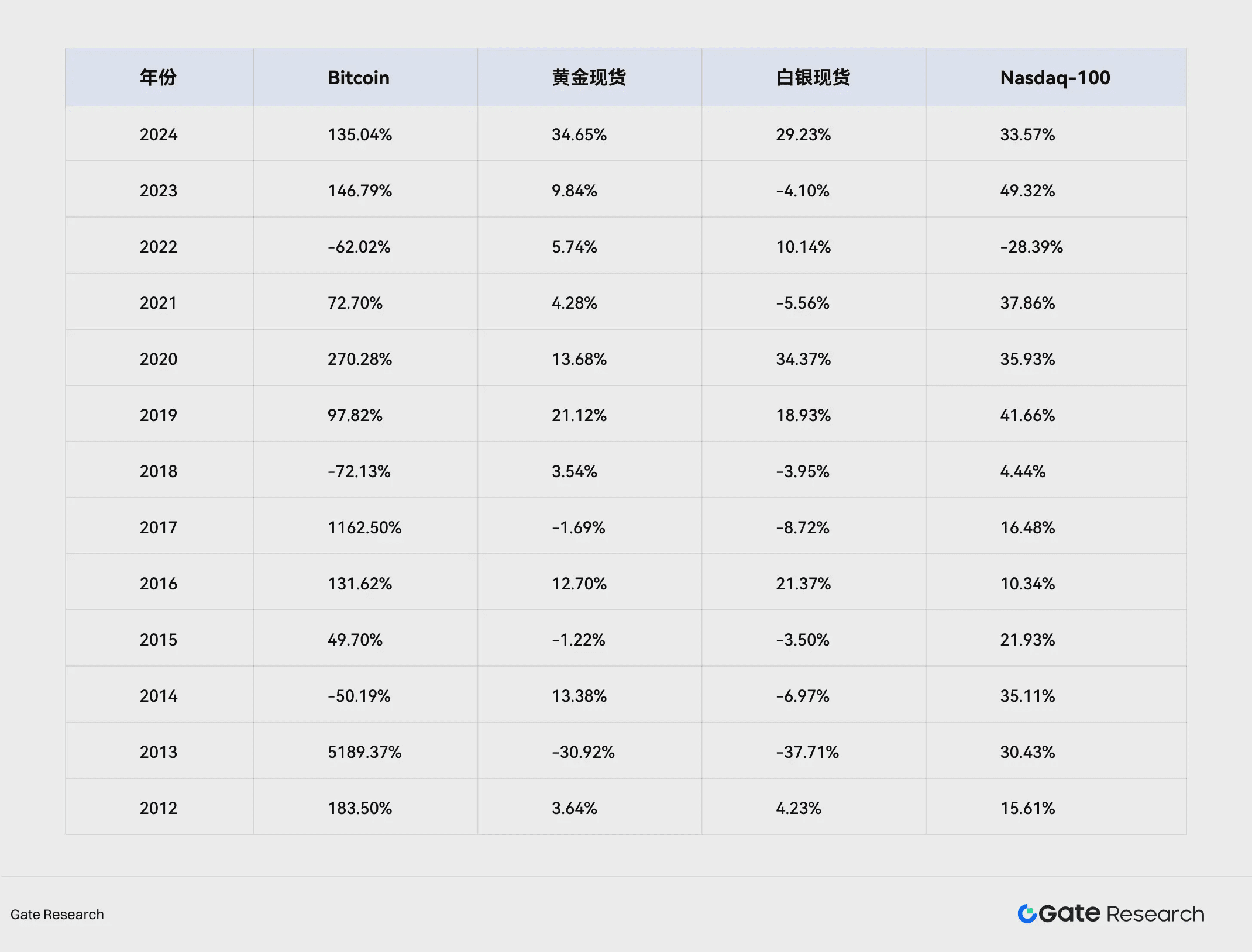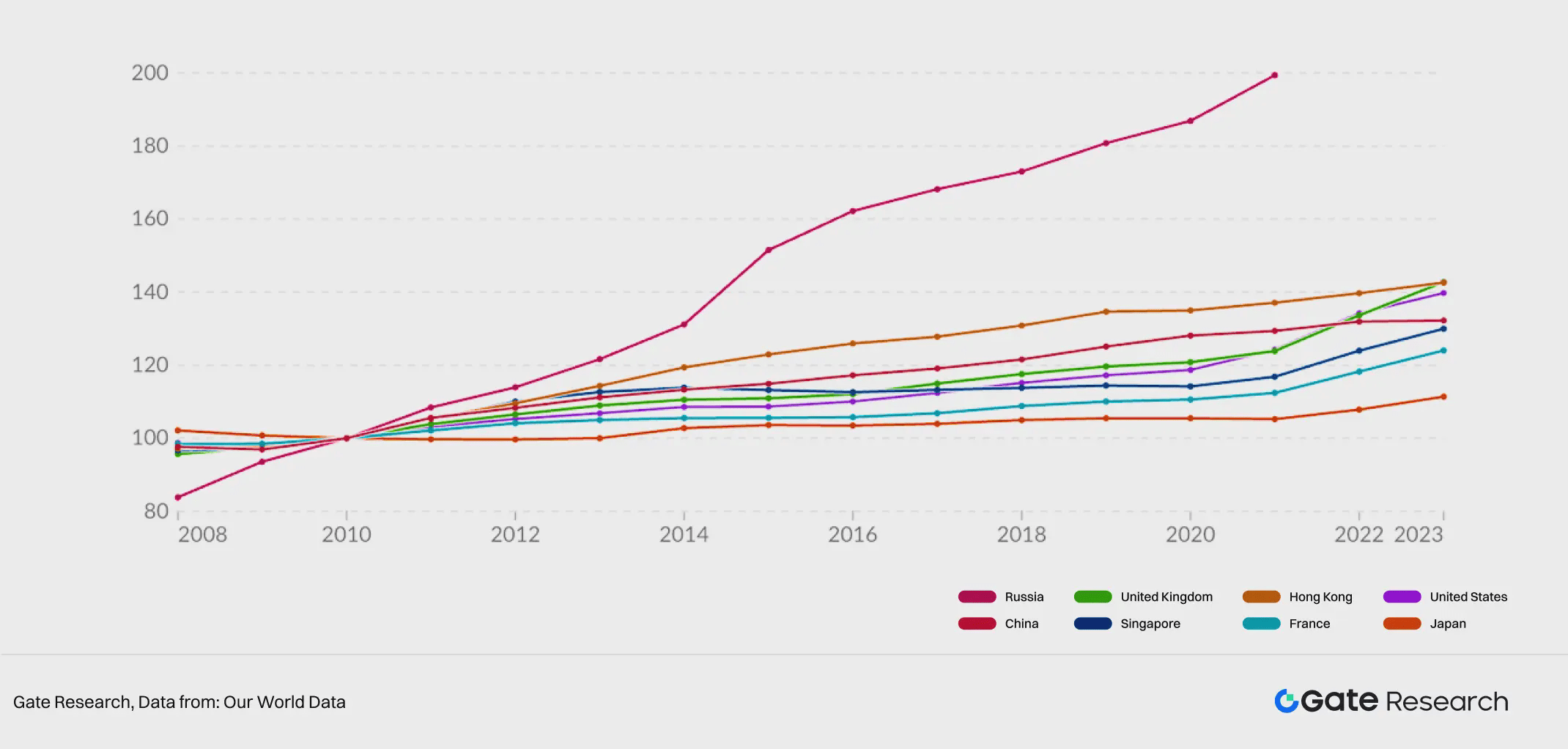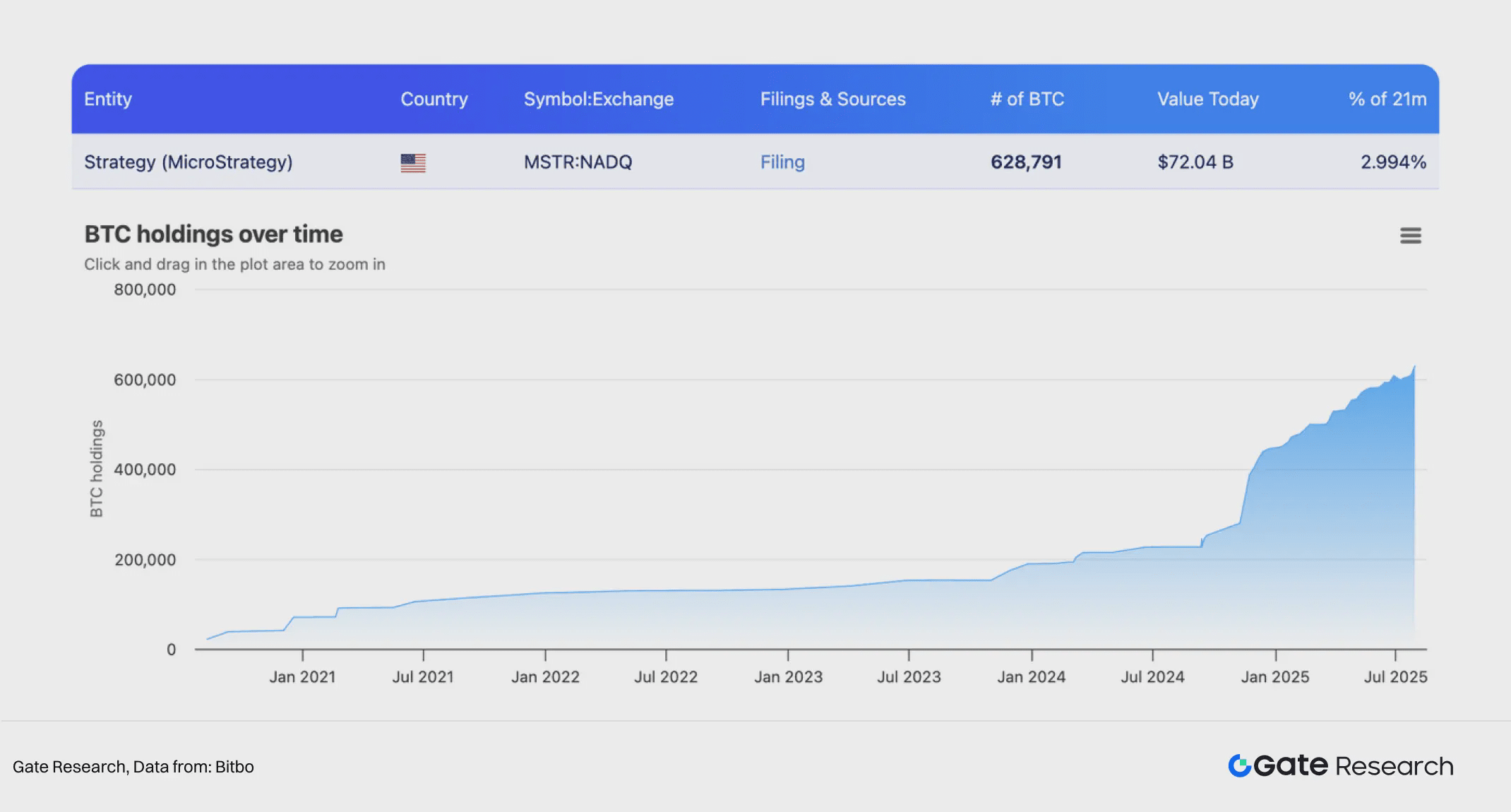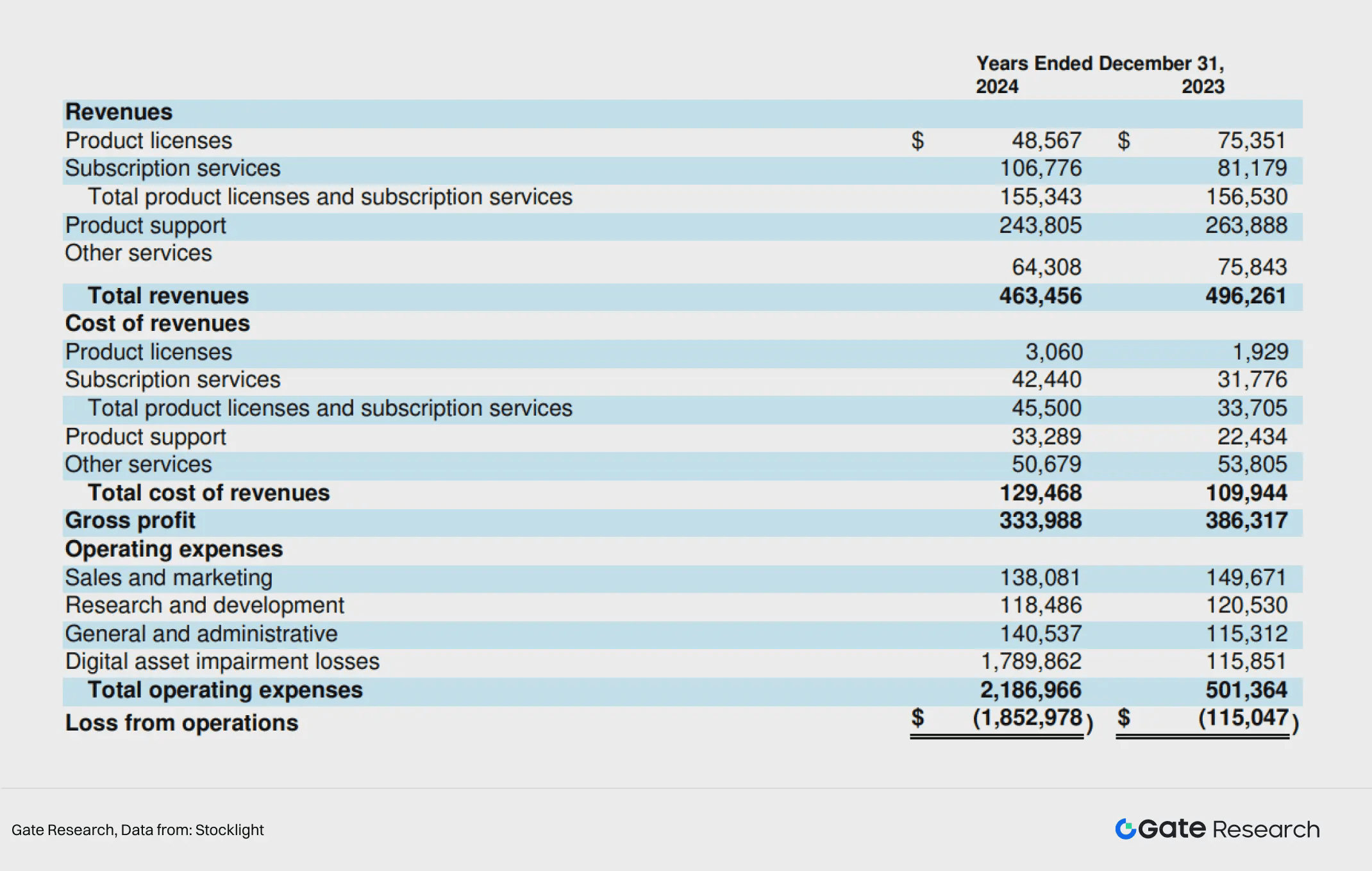Introduction
After experiencing industry restructuring, a crisis of trust, and regulatory transformations from 2022 to 2024, the crypto market in 2025 welcomes a new round of transformation led by institutions. As regulatory frameworks become clearer and compliant channels fully open, crypto assets are gradually shedding their 'marginal asset' label, becoming a 'core allocation' in an increasing number of institutional portfolios.
The rise of this wave of 'institutionalization' is attributed to a series of landmark policies and market events:
• (Genius Act) through, as well as the SEC officially approving the listing of spot Bitcoin ETFs in 2024 (including giants like BlackRock, Fidelity, ARK), marking the full opening of mainstream compliant entry channels;
• Hong Kong's stablecoin regulations established a licensing system for stablecoin issuance, creating a leading regulatory framework for crypto assets in Asia;
• The full implementation of the European MiCA regulations has unified the regulation of stablecoins and crypto assets within the EU, laying a legal foundation for cross-border institutional investment;
• The Russian Ministry of Finance has expressed support for moving crypto assets 'out of the shadows' and opening compliant trading channels for high-net-worth investors;
• Traditional financial institutions are actively entering the space, with BlackRock, Franklin Templeton, Nomura, Standard Chartered, and others sequentially laying out digital asset management, custody, payment, and underlying infrastructure.
Clearer regulations have led to the restoration of market confidence and the restructuring of capital structures. According to EY-Parthenon's 2025 (Institutional Digital Assets Survey), over 86% of global institutional investors have indicated that they have participated in or plan to invest in crypto assets within the next three years. Nomura's research also shows that more than half of Japanese institutions have included digital assets in their strategic vision.
In this context, this report will systematically review the motivations behind institutional investors' layouts in crypto assets, focusing on the evolution of their investment strategies, differentiation of allocation paths, and transformation of market participation methods, and reveal the structural opportunities of the crypto asset market in the 'institutionalization era' through case analyses.
Motivations for Institutional Entry
Digital assets have evolved from being viewed as 'high volatility' and 'high risk' marginal assets to becoming an important allocation that cannot be ignored in institutional portfolios. According to multiple surveys, over 83% of institutional investors plan to continue or increase their digital asset allocations in 2025, with a significant proportion intending to 'significantly increase' their allocations. The motivations for institutional investors' positioning stem from the unique asset characteristics of digital assets and the benefits of mature technological infrastructure and confidence in future technological trends.
2.1 High Return Rates and Diversified Risks
Since 2012, the returns of BTC and other cryptocurrencies have significantly outpaced traditional assets like gold, silver, and NASDAQ, with an average annual return of 61.8% for BTC, while traditional institutional portfolios are facing diminishing marginal returns. Especially in the post-pandemic era, high inflation and uncertainty in policy interest rates have led institutions to seek low-correlation assets.

Research shows that the correlation coefficient between BTC and stocks has averaged below 0.25 over the past five years, with a correlation with gold as low as 0.2–0.3, and its relationship with currencies and commodities from emerging markets (such as Latin America, Southeast Asia) becoming more independent. This makes crypto assets an important tool for pursuing excess returns, hedging systemic risks, and optimizing the Sharpe ratio.
2.2 Strategic Demand for Inflation Hedging and Currency Depreciation Risks
Since 2020, global quantitative easing has led to a general rise in asset prices across major economies, making inflation the top challenge for global investors. Crypto assets (especially BTC), with their technical attributes of a 'fixed total supply of 21 million,' are viewed as 'digital gold,' particularly suitable as tools for hedging currency depreciation risks. BlackRock's Chief Investment Officer Rick Rieder has publicly stated: 'In the long run, BTC is more like a value storage tool than a pure medium of exchange.'

2.3 Infrastructure and Settlement Efficiency Improvement
For a long time, a core concern of institutional investors regarding crypto assets has been their opaque settlement processes, lack of custody standards, and excessive counterparty risks. The early form of the crypto asset market resembled 'shadow finance,' lacking central clearing systems, regulated custody institutions, and standardized risk control mechanisms, similar to those in traditional finance. This creates high uncertainty regarding the safe custody of funds and post-transaction asset settlement, particularly for large institutions, where this 'uncertainty' itself poses high risks.
However, in recent years, there has been a qualitative leap in the infrastructure construction of the entire crypto asset ecosystem, especially in the following key areas:
• Custody services are entering compliance tracks
Currently, several custody service providers have obtained trust licenses granted by financial regulatory agencies to provide compliant asset custody services for institutional clients. For example, Fidelity Digital Assets offers end-to-end custody and trading solutions for institutional clients and has expanded some services to Asian and European markets. These institutions can implement traditional security mechanisms such as cold wallet isolation and multi-signature management, along with insurance solutions, anti-attack systems, and real-time audits to increase the trust level of fund storage.
• The clearing system and matching mechanism are becoming more specialized
At the trading level, the original CEX and OTC trading processes often faced delays and counterparty default risks due to the lack of clearing intermediaries. Platforms like Gate and financial institutions are beginning to introduce settlement and matching mechanisms closer to traditional finance.
• Improved settlement efficiency brings cost reductions and upgraded risk control
In traditional markets, cross-border payments and securities settlements often take days and are costly. However, the on-chain settlement mechanisms in the crypto market inherently possess advantages of high efficiency and low intermediary dependence, combined with the aforementioned custody and clearing infrastructure, can achieve: T+0 transaction settlement efficiency and a 24/7 operation mechanism, breaking the time constraints of traditional financial markets and supporting the synchronized circulation of global assets.
2.4 Technology-Driven Future Business Participation
Institutional entry into the crypto market is also a strategic choice of 'betting on future technological directions.' Emerging fields like Web3, DeFi, and RWA may reshape the way finance is served and the forms of assets.
For example:
• Swiss banks are participating in RWA on-chain bond issuance
• Citibank launched a tokenized deposit experimental platform
• JPMorgan has deployed the Onyx project to achieve on-chain corporate settlements
In these transformation processes, early participants possess a first-mover advantage.
2.5 Client Demand and New Generation Asset Preferences
Many institutional investors, especially pension funds and insurance companies, are experiencing a 'generational shift' in audience structure. Generation Z and millennials are more familiar with digital assets, forcing institutions to reassess their allocation models. Fidelity's 2024 report indicates that nearly 60% of millennial clients want their retirement accounts to include BTC or ETH. This change accelerates the diversification and popularization of institutional products.
Institutional Investment Strategy Analysis
As the crypto market gradually institutionalizes and matures in asset structure, institutional investors' participation methods are also becoming increasingly diversified. From 'tentative positions' to 'portfolio strategy construction,' institutional investment is showing significant layering, strategization, and structuring characteristics. This chapter systematically reviews the typical entry strategies and asset preferences of different institutions in crypto asset investments from the dimensions of institution type, operation style, and allocation path.
3.1 Classification by Institution Type: Heterogeneity-Driven Strategy Structure
Institutional investors are not a homogeneous group but a complex ecosystem composed of varying risk preferences, allocation targets, and liquidity needs. Typical representatives include family offices, pension/sovereign wealth funds, university endowment funds, etc., whose investment paths in the crypto market show high differentiation.
3.1.1 Family Offices
• With high risk tolerance and asset innovation acceptance, the allocation target is flexible;
• Preferring early token projects, crypto-native risk funds, and on-chain yield strategies;
• Often adopting direct holdings, participating in token private placements, or investing through Web3 funds.
Case: Several family offices in Singapore and Switzerland are actively participating in Ethereum staking services and seed round financing for Web3 infrastructure projects (such as Rollups and Oracles).
3.1.2 Pension Funds and Sovereign Wealth Funds
• Pursuing long-term stable returns and macro hedging capabilities, with a conservative allocation style;
• More inclined toward compliant products, such as spot ETFs and bond-type RWAs (Real-World Assets);
• Usually gaining exposure to crypto assets indirectly through large asset management platforms (such as BlackRock, Fidelity).
Case: Norway's sovereign fund Norges Bank disclosed its holdings of Coinbase equity and BTC ETF products in its 2024 annual report, marking that sovereign funds are positioning themselves in digital assets through equity pathways.
3.1.3 University Endowment Funds and Institutional Funds (Endowments & Foundations)
• The logic of allocation is dominated by technological innovation and frontier trends;
• Participating through well-known Web3 funds (such as a16z crypto, Paradigm, Variant);
• More inclined towards early track investments, including Layer2, privacy computing, AI+Crypto, etc.
Case: Endowment funds from Harvard, MIT, Yale, and others have long been investing in Web3 funds, showing high participation in data composability and foundational protocol layers.
3.2 Divided by Operation Style: Coexistence of Active and Passive Strategies
The operational styles of institutions regarding crypto assets can be broadly divided into active management and passive allocation strategies, reflecting differentiated preferences for risk-return structures and operational resource investments.
3.2.1 Active Configuration Strategy
• Establishing independent research teams to deeply participate in on-chain data analysis and off-chain valuation modeling;
• Strategies encompass arbitrage, Staking, DeFi liquidity mining, Gamma (volatility) strategies, protocol governance, etc.;
• Emphasizing strategy flexibility and capturing frontier tracks, investment structures usually involve multi-chain, multi-asset, and cross-protocol combinations.
Case: Franklin Templeton has built a crypto fund management platform, providing Staking-as-a-Service, DeFi liquidity deployment, and other services, a typical representative of the institutionalization of active strategies.
3.2.2 Passive Configuration Strategy
• Often indirectly holding through forms such as ETFs, structured notes, and fund shares;
• Emphasizing controllability of net value fluctuations and transparency of risk exposure;
• Targeting high market capitalization assets such as BTC and ETH, occasionally allocating to stablecoin yield strategies.
Case: The 'Multi-Asset Digital Index Fund' launched in 2025 is favored by pension funds and insurance institutions to build a low-correlation asset pool.
3.3 Divided by Configuration Path and Asset Preferences: From 'Buying Coins' to 'Building Systems'
In actual investment operations, institutions no longer view crypto assets as a single target but build asset sub-systems through a combination of strategies. The main allocation paths can be summarized into three categories:
3.3.1 Mainstream Asset Allocation (BTC / ETH)
• As the core assets of 'digital gold' and 'Web3 operating systems,' mainstream currencies constitute the underlying layer of most institutional asset pools;
• BTC typically serves the functions of value storage and inflation hedging;
• ETH represents a structural bet on on-chain economy, DeFi, RWA, and other ecosystems.
3.3.2 Thematic Track Configuration
• Focusing on high growth and high beta emerging directions, such as Layer2 (Arbitrum), modular blockchains (Celestia), AI-driven protocols (Bittensor), and decentralized storage (Arweave);
• Investment methods primarily involve early-stage private placements and fund subscriptions, suitable for high-risk tolerant institutions;
• Often used to seek structural dividends and medium to long-term return potential.
3.3.3 Infrastructure and Compliance Services Allocation
• Allocation targets include equity in compliant custody institutions (such as Anchorage), on-chain risk control platforms, and DePIN (Decentralized Physical Infrastructure Networks);
• Viewed as non-coin targets with policy moats and long-term technological value;
• Suitable for institutional investors like sovereign funds and university endowments that have strategic expectations for 'crypto ecosystem infrastructure.'
3.4 Summary: Structural Evolution of Strategy Spectrum
Through the three-dimensional intersection analysis of institution type, operation style, and allocation path, it can be seen that institutional investment in crypto assets has far exceeded the 'buying coins' level, but is constructing a 'multi-strategy, multi-path, cross-track' structured asset allocation system. This evolution of strategy spectrum not only reflects institutions' cognitive upgrades regarding asset nature and macro logic but also embodies deep participation in technological pathways, governance structures, and policy trends.
In the future, as compliant products continue to diversify and infrastructure matures further, the strategic spectrum of different types of institutions will become more diversified and refined, establishing a stable anchor position for crypto assets within the global asset allocation system.
Representative Cases
In the past year, institutional interest in crypto assets has continued to rise, with several listed companies and investment institutions increasing their allocations in mainstream crypto assets such as Bitcoin (BTC) and Ethereum (ETH) through direct purchases, increases, or long-term holdings. This trend not only reflects the recognition of traditional financial capital for the crypto market but also highlights the potential of assets like Bitcoin in inflation hedging and asset diversification.
4.1 Strategy
MicroStrategy, founded in 1989, was originally a traditional technology company focusing on business intelligence (BI) software, long specializing in enterprise data analysis and reporting services. Although its products cover multiple large enterprise clients, its main business has experienced slow growth over the past ten years, with revenue scale and profitability facing growth bottlenecks. In the context of macro changes, increasing inflation pressures, and declining returns on fiat assets, the company's management began to rethink the structure of its balance sheet and the efficiency of corporate fund allocation. In 2020, under the leadership of then-CEO Michael Saylor, MicroStrategy embarked on a highly controversial yet forward-looking strategic transformation: to use Bitcoin as the company's primary reserve asset.

In August 2020, MicroStrategy purchased 21,454 BTC for $250 million for the first time, and subsequently increased its total holdings to over 620,000 BTC through multiple rounds of purchases from 2020 to 2024, with a total acquisition cost exceeding $21 billion. Notably, this series of purchases did not rely solely on the company's own funds but was implemented through a series of capital market tools (including issuing convertible bonds, directed placements, ATM stock financing, etc.) to implement a 'financing leverage' strategy, amplifying BTC's asset exposure and return potential. This mechanism not only effectively leverages market funds but also gradually transforms MicroStrategy into a 'Bitcoin Proxy' (an indirect Bitcoin exposure tool), whose stock price is highly positively correlated with BTC and is viewed by investors as an early ETF alternative.

This combination strategy of 'corporate holding + market financing + BTC asset revaluation' has profoundly influenced MicroStrategy's operational landscape. The Q2 2025 financial report shows that while the software main business remains stable, the book appreciation of BTC holdings has become the company's main source of profit; the company's quarterly net profit reached $10 billion, and its stock price rose over 39% within the year. This result not only reshaped its capital market image but also significantly enhanced the company's liquidity and balance sheet strength.
In early July 2025, Strategy announced the purchase of 21,021 BTC for $2.46 billion, bringing its total Bitcoin holdings close to an all-time high. However, in the following two weeks, Strategy did not release new purchase information, leading the market to speculate that its accumulation plans may temporarily slow down. This change in strategy rhythm also reflects institutions' flexibility and risk control awareness in responding to market volatility.
As the first publicly traded company to hold crypto assets on a large scale, MicroStrategy pioneered a new path of 'using Bitcoin as the underlying asset for corporate assets.' Its successful experience has provided a model for later entrants (such as Tesla, Square, Nexon, etc.) and has sparked broader thoughts on 'how crypto assets can optimize corporate asset allocation structures.' From the perspective of traditional enterprises, MicroStrategy's path is not merely an investment behavior but a comprehensive strategy choice to combat macro inflation, restructure capital efficiency, and gain market repricing. Currently, with the introduction of Bitcoin spot ETFs and the continuous expansion of institutional entry channels, MicroStrategy's 'corporate holding' paradigm is evolving from an isolated case to a systematic trend, providing a solid template for the institutionalization process of the entire crypto market.
4.2 Bitmine
According to Bloomberg reports, Bitmine currently holds approximately 833,000 ETH, with a market value close to $3 billion, becoming one of the largest institutional holders of Ethereum. Bitmine's strategy significantly differs from traditional Bitcoin-heavy companies, and its heavy position in ETH indicates its optimistic view on Ethereum's future ecological potential in smart contracts, L2 scaling, and asset tokenization.
4.3 Metaplanet
The Japanese listed company Metaplanet recently increased its holdings by 463 BTC, with a total transaction amount of approximately $53.7 million, further enhancing its total holdings. As a representative emerging Bitcoin investor in the Asian market, Metaplanet's continuous investments not only respond to the trend of increasingly clear domestic regulations on digital assets in Japan but may also inspire more Asian companies to undergo asset allocation transformations.
4.4 Sequans and GameSquare
In addition to Bitcoin, some companies are also starting to lay out other mainstream crypto assets. Sequans recently added 85 BTC, bringing its total holdings to 3,157 BTC, while GameSquare increased its holdings by 2,717 ETH, raising its total holdings to 15,630 ETH. This indicates that some institutions are attempting to optimize their crypto asset portfolios by diversifying their allocations in BTC and ETH. Additionally, more companies are beginning to pay attention to emerging projects like Solana, reflecting a rising interest in the 'new public chain' track.
Future Trends
With the clarity of the policy environment and the maturity of infrastructure, institutional investors are entering the crypto market at an unprecedented speed and depth. This trend is not a momentary whim but a strategic choice based on macro hedging demands, portfolio optimization goals, and expectations of technological dividends. The 'non-correlation' feature of crypto assets, high potential returns, and the increasing importance of underlying blockchain technology in financial infrastructure are fundamental drivers of institutional entry.
From an investment outcome perspective, although the crypto market exhibits high volatility, mainstream assets (such as Bitcoin and Ethereum) have demonstrated relatively robust long-term returns over the past several cycles. The rapid expansion of ETF products, the outperformance of on-chain fund strategies, and the relative resilience of multi-strategy funds in low-correlation market environments all validate the effectiveness of institutional fund allocation.
In the future, the forms of institutional investors participating in the crypto market will become increasingly diverse and systematic. From entering through ETFs and structured products to the combination of RWA and on-chain securities issuance, and even becoming node operators and protocol governors within the ecosystem, or executing strategies driven by AI models on-chain to realize 'model as investment' logic— all of this indicates that the crypto market is transitioning from a phase of capital injection to deeper institutional embedding and governance restructuring.
In this transformation process, early participants will not only be financial investors but also designers and promoters of a new financial order. Crypto assets are no longer a playground for speculators but will become an indispensable part of the modern financial system.
References
• Ey, https://www.ey.com/content/dam/ey-unified-site/ey-com/en-us/insights
• Our World Data, https://ourworldindata.org/grapher/consumer-price-index
• Stocklight, https://stocklight.com/stocks/us/nasdaq-mstr/microstrategy/annual-reports
• Bitbo, https://bitbo.io/treasuries/historical
Disclaimer
Investing in the cryptocurrency market involves high risks, and users are advised to conduct independent research and fully understand the nature of the assets and products being purchased before making any investment decisions. Gate does not assume responsibility for any losses or damages resulting from such investment decisions.



